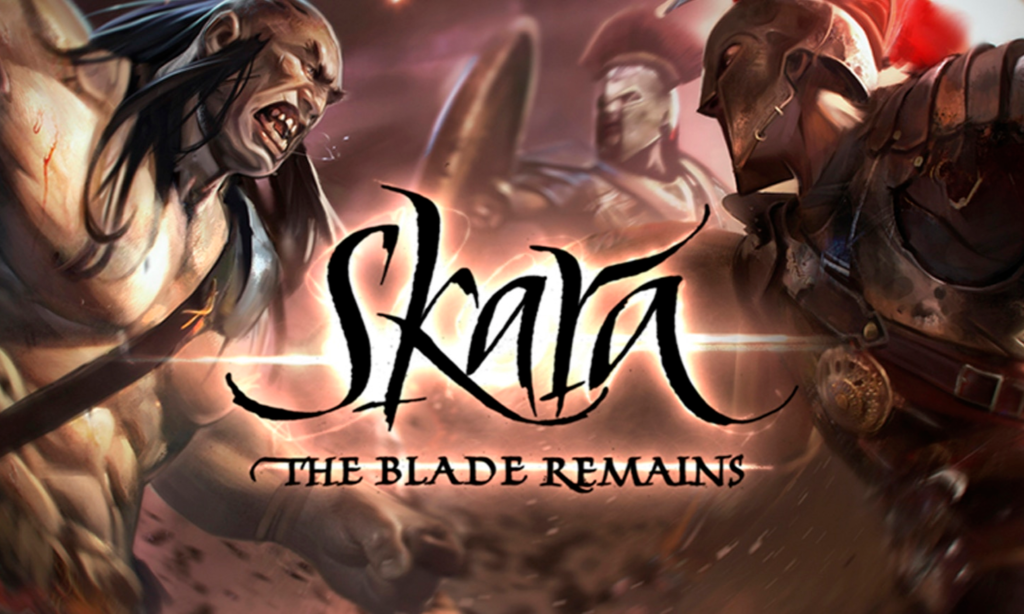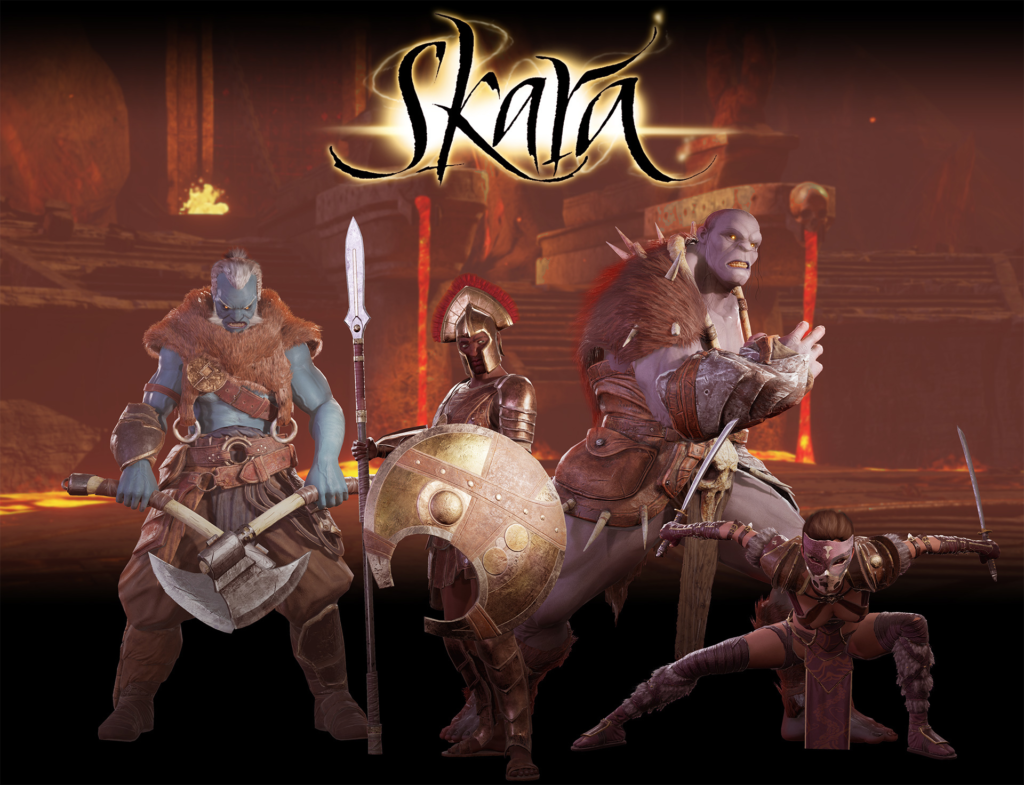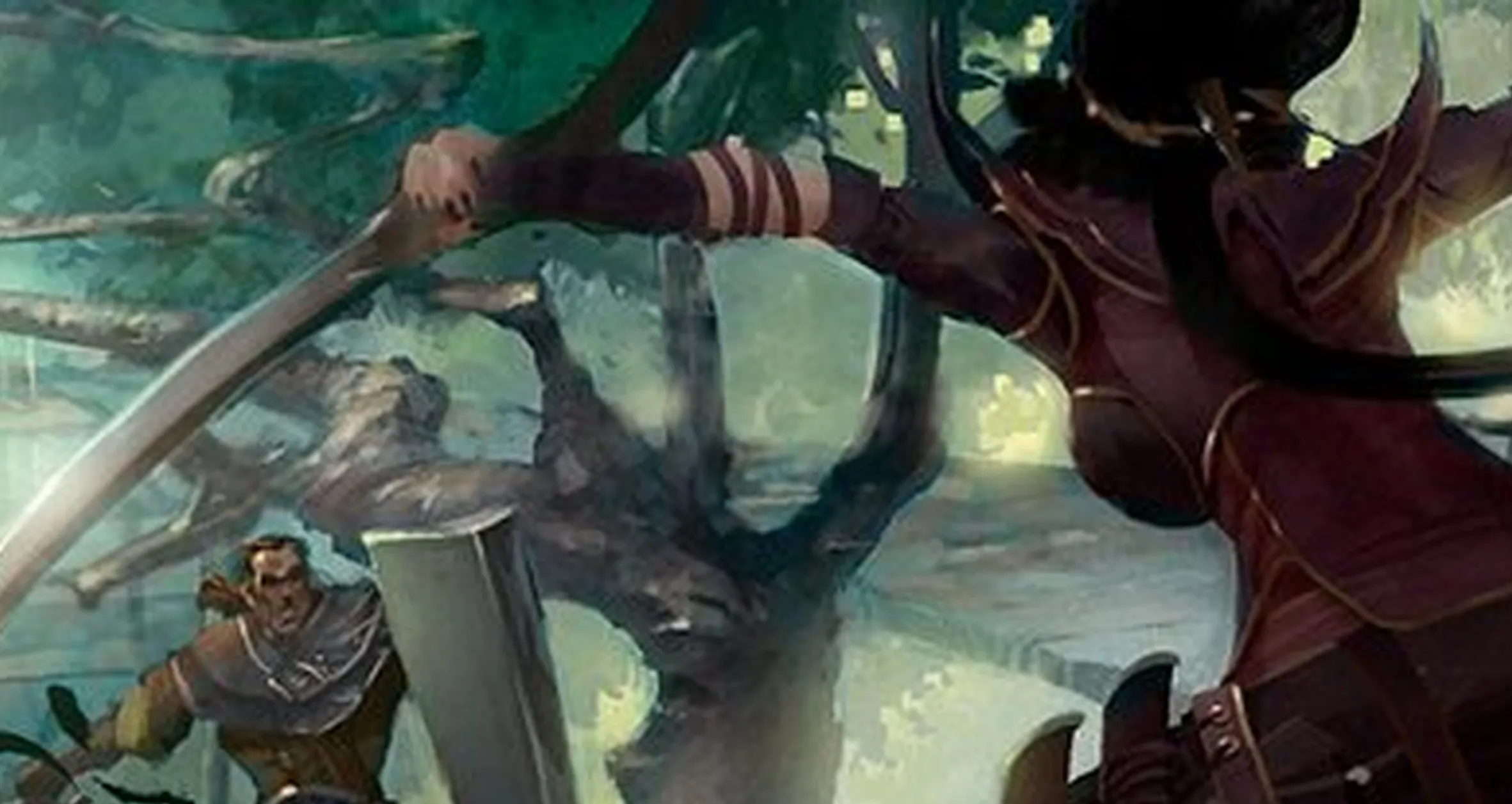Now Reading: Skara: The Blade Remains – A Visionary Multiplayer Combat Game and Its ICO Journey
-
01
Skara: The Blade Remains – A Visionary Multiplayer Combat Game and Its ICO Journey
Skara: The Blade Remains – A Visionary Multiplayer Combat Game and Its ICO Journey

Introduction
Among the most ambitious independent game projects in recent years, Skara: The Blade Remains stood out as an innovative, fast-paced multiplayer combat game that blended elements of fighting games, MOBAs, and RPGs. Developed by 8-Bit Studios and built using Unreal Engine 4, the game promised an immersive melee combat experience unlike anything seen in the competitive gaming space. From its explosive debut in the gaming community to its foray into blockchain technology through an Initial Coin Offering (ICO), Skara had an eventful journey that deserves recognition.
The game’s concept was rooted in the idea of creating a skill-based combat system where players had to rely on reflexes, strategy, and mastery of character abilities. Unlike many traditional multiplayer games that emphasize ranged combat, Skara focused on close-quarters melee engagements, making each battle feel intense and highly personal. This innovative approach captured the interest of both hardcore competitive gamers and fans of fantasy action games, setting Skara apart from many of its contemporaries.

The Rise of Skara: A Unique Combat Experience
Skara: The Blade Remains was conceived as a high-skill, reaction-based combat game where players could engage in battles ranging from 1v1 duels to intense 16-player skirmishes. Its core gameplay focused on precision, combos, and fluid animations, drawing comparisons to For Honor and Dark Souls while maintaining its own distinctive identity.
The game’s factions played a significant role in shaping the experience. Players could choose from different warrior tribes, each featuring a unique fighting style, lore, and abilities. These factions weren’t just cosmetic; they influenced the way a player engaged in combat, forcing them to adopt different strategies depending on their character’s strengths and weaknesses. This faction-based system added an extra layer of depth to Skara, making it more than just a standard hack-and-slash game.
Customization was another major feature that set Skara apart. Players had the ability to modify their warriors by upgrading weapons, armor, and combat techniques, allowing for a personalized approach to combat. This level of customization meant that no two battles were ever exactly the same, as players could fine-tune their characters to match their preferred playstyles.
The game’s development team, led by Pablo Rodríguez, pushed boundaries with Unreal Engine 4, leveraging cutting-edge graphics and physics to enhance the fluidity of battle animations and environmental interactions. The use of Unreal Engine 4 enabled Skara to deliver visually stunning arenas and character designs, making it a standout title in the indie scene. The game’s fast-paced combat, combined with its emphasis on player skill, made it a title that many in the gaming community were excited to experience.
One of the most remarkable aspects of Skara’s early success was its rapid acceptance on Steam Greenlight. Within just eight days in January 2014, the game achieved Greenlit status, a testament to the excitement and demand from the gaming community. This strong start propelled the game forward and provided a much-needed boost of confidence for the development team as they continued refining the game’s mechanics and content.

The Challenges of Indie Development
Despite its promising start, Skara faced significant hurdles. Indie game development often struggles with funding, and Skara was no exception. Developing a high-quality multiplayer game with top-tier graphics and mechanics requires substantial financial resources, something that many indie studios lack.
In June 2014, 8-Bit Studios launched a Kickstarter campaign with the goal of raising £150,000 to fuel the game’s development. While the campaign garnered strong enthusiasm from backers, it ultimately fell short, securing only £40,037 from 130 supporters. This shortfall in funding forced the team to reevaluate their approach and seek alternative means of financial support.
Despite this setback, Skara continued to push forward. A major breakthrough came when Microsoft selected the game for its first-ever London Accelerator program in early 2014. This prestigious initiative provided crucial exposure, industry connections, and support, helping the game maintain momentum despite its funding struggles. The Microsoft partnership was an important validation of Skara’s potential and played a key role in keeping the project alive.
By 2016, Skara entered Early Access on Steam, allowing players to experience the game while the developers gathered feedback and made necessary adjustments. This phase was essential for refining the gameplay mechanics and balancing the combat system. The feedback from Early Access players helped shape the game’s final direction, ensuring that it met the expectations of its dedicated community.

Technical Analysis: Skara’s Blockchain Gaming Integration
As one of the early pioneers attempting to merge traditional gaming with blockchain technology, Skara: The Blade Remains sought to introduce decentralized asset ownership and an in-game economy powered by cryptocurrency. The game’s ICO and blockchain integration were designed to enhance the player experience by leveraging transparency, security, and true ownership of digital items. However, the execution of these ideas faced significant technical and adoption challenges.
Blockchain Architecture and Smart Contracts
Skara’s blockchain infrastructure was intended to operate on Ethereum, leveraging ERC-20 and ERC-721 token standards. The primary token, SKARA Token, was planned as a utility token within the game, allowing players to engage in peer-to-peer transactions, acquire in-game items, and participate in competitive rewards. Additionally, Skara aimed to tokenize in-game assets as NFTs (non-fungible tokens), giving players verifiable ownership of weapons, skins, and other cosmetic or functional upgrades.
To facilitate secure transactions, smart contracts were proposed to handle asset exchanges, player rewards, and staking mechanisms. These contracts were designed to ensure a trustless environment where ownership and game-related transactions were executed without intermediaries. This was particularly valuable in preventing item duplication, fraudulent exchanges, and unauthorized trading outside the official marketplace.
Decentralized Economy and Play-to-Earn Model
Unlike conventional centralized gaming economies where developers retain full control over assets, Skara aimed to empower its players through a decentralized in-game economy. The SKARA Token would function as both a means of exchange and a governance tool, potentially allowing players to influence game decisions and economic parameters.
The introduction of a play-to-earn (P2E) model was another ambitious element. Players could earn SKARA Tokens through competitive matches, achievements, and trading NFTs in the in-game marketplace. This model was expected to drive player engagement and create new financial incentives for competitive gaming. However, since blockchain-based P2E games were still in their infancy, Skara faced difficulties in structuring a sustainable tokenomics model that would prevent inflation and economic imbalance.
Challenges in Adoption and Technical Constraints
While the blockchain vision for Skara was forward-thinking, it encountered several significant challenges:
- Scalability Issues: Ethereum, at the time of Skara’s ICO, suffered from high transaction fees (gas fees) and network congestion. This posed a major barrier to mass adoption, as players would have to pay fees for simple transactions, such as purchasing an item or transferring assets between wallets.
- Regulatory Uncertainty: The ICO landscape was fraught with legal challenges, as regulators around the world were scrutinizing blockchain fundraising efforts. Ensuring compliance with financial laws while maintaining decentralization proved difficult.
- User Accessibility: Blockchain integration required players to manage wallets, private keys, and interact with decentralized applications (dApps). Many traditional gamers were unfamiliar with these processes, leading to usability barriers and friction in onboarding.
- Economic Stability: The volatility of cryptocurrency prices posed risks for players who engaged in the in-game economy. Without mechanisms to stabilize token value, economic imbalances could discourage participation.
Lessons and Future Implications for Blockchain Gaming
Despite the difficulties, Skara helped lay the foundation for future blockchain gaming projects. Many of the challenges it faced have since been addressed by newer blockchain solutions, such as:
- Layer 2 Scaling Solutions: Networks like Polygon and Immutable X have reduced transaction costs and improved throughput, making blockchain gaming more viable.
- Hybrid Monetization Models: Many games have moved towards a hybrid approach where players can engage without mandatory blockchain interaction, easing adoption barriers.
- DAO Governance & Community Involvement: Some blockchain games have successfully implemented Decentralized Autonomous Organizations (DAOs) to allow token holders to participate in game development decisions.
While Skara’s blockchain ambitions were not fully realized, its attempt to merge competitive gaming with decentralized technology was ahead of its time. As the gaming industry continues to embrace Web3, Skara’s efforts serve as a case study on both the possibilities and the challenges of integrating blockchain into traditional gaming ecosystems.
While blockchain integration in gaming would later become more viable with projects like Axie Infinity and Gods Unchained, Skara was ahead of its time, facing significant challenges in securing long-term sustainability through its ICO. Ultimately, the game’s blockchain initiative was unable to achieve the level of mainstream adoption needed to sustain its ambitious vision.
The Legacy of Skara: Lessons and Impact
While Skara: The Blade Remains did not achieve commercial longevity, it left a lasting impact on indie game development and early blockchain gaming initiatives. It showcased how small studios could push technological boundaries, introduce new combat mechanics, and experiment with emerging technologies like blockchain.
The game’s journey provides key lessons for developers and blockchain enthusiasts alike:
- Innovative gameplay is crucial – Skara demonstrated that indie developers could rival AAA studios in terms of mechanics and design.
- Community engagement is essential – While Skara gained strong initial support, maintaining that engagement was a challenge.
- Funding models continue to evolve – Crowdfunding and blockchain funding offer new opportunities, but they also come with unique risks.

Final Thoughts
Skara: The Blade Remains was a bold experiment in competitive gaming that dared to be different. Though its journey faced obstacles, its ambition and innovative design continue to inspire future developments in blockchain gaming.
The game demonstrated how indie studios could push the boundaries of multiplayer combat experiences by emphasizing skill-based melee combat and rich customization. It proved that high-quality indie games could stand shoulder-to-shoulder with AAA titles in terms of gameplay depth, artistry, and immersive mechanics.
Beyond the realm of gaming, Skara’s attempt to pioneer blockchain integration in a competitive multiplayer game foreshadowed the rise of NFT gaming and play-to-earn models. Though its ICO faced significant regulatory and adoption challenges, it laid the groundwork for future projects that would later capitalize on the Web3 revolution. The idea of true digital ownership of in-game assets, which Skara sought to implement, is now a core principle of modern blockchain gaming ecosystems.
For developers, Skara serves as a case study in both ambition and the realities of game development. It highlights the importance of securing long-term funding, adapting to evolving industry trends, and managing community expectations. For gamers, it remains a reminder of what happens when a passionate team takes risks to create something fresh and innovative, even in the face of adversity.
Like the warriors who once clashed in Skara’s arenas, every great journey must come to an end. But endings are not just conclusions—they are stepping stones to the future. Skara: The Blade Remains was more than just a game; it was a dream of skillful combat, community-driven innovation, and technological evolution. It may have been ahead of its time, but the lessons it leaves behind will continue to shape the gaming world for years to come.
To all the players, developers, and supporters who believed in Skara, thank you for being part of this adventure. Though the servers may be silent, the spirit of Skara will forever live on in the memories of those who fought bravely within its world.
Until we cross paths again in the digital battlefield of the future—keep fighting, keep innovating, and never stop dreaming.
Ignasi Rivero